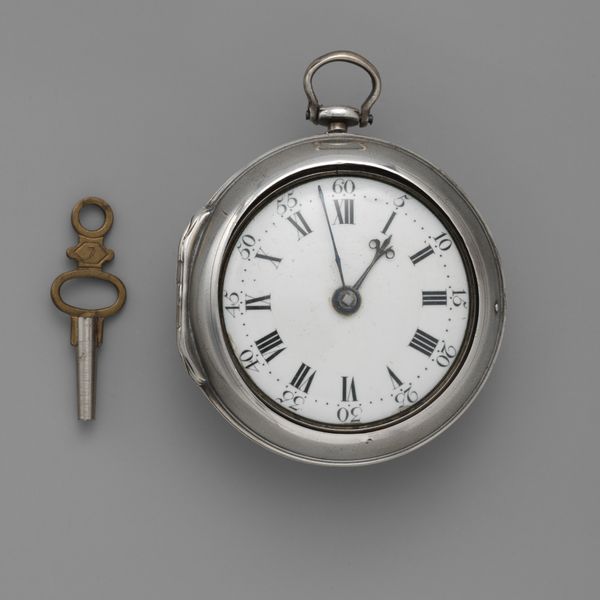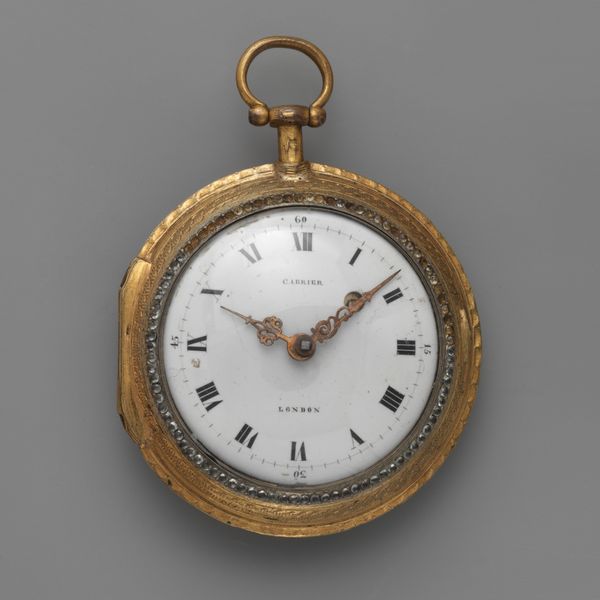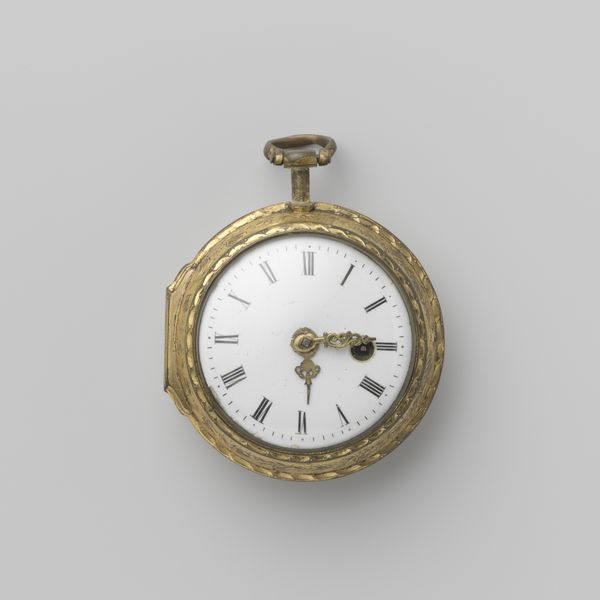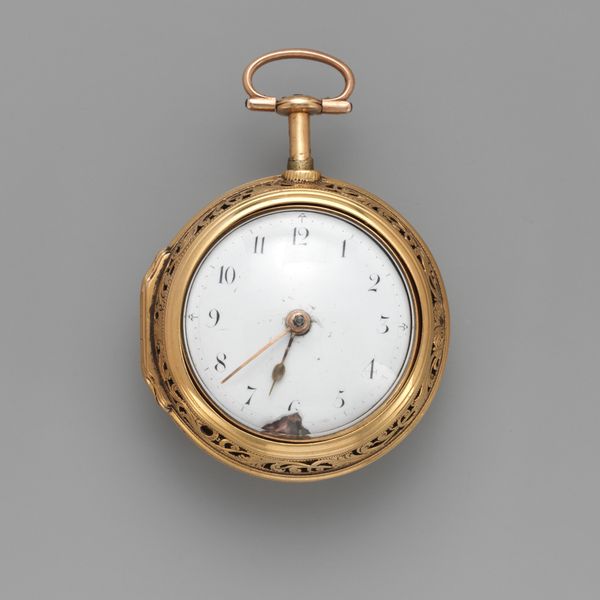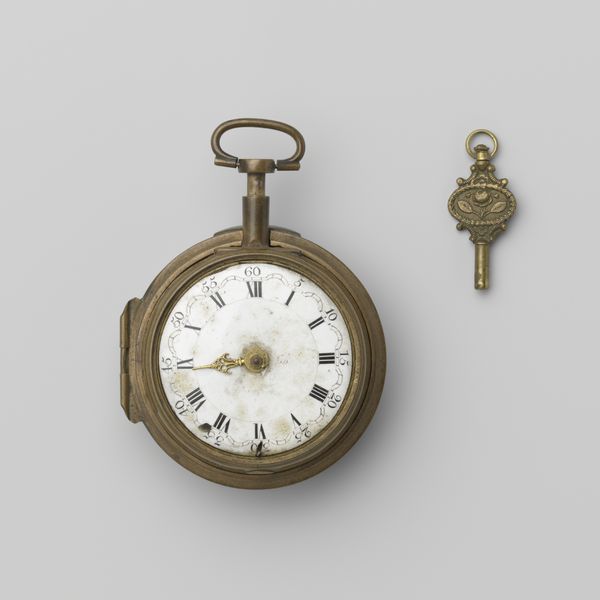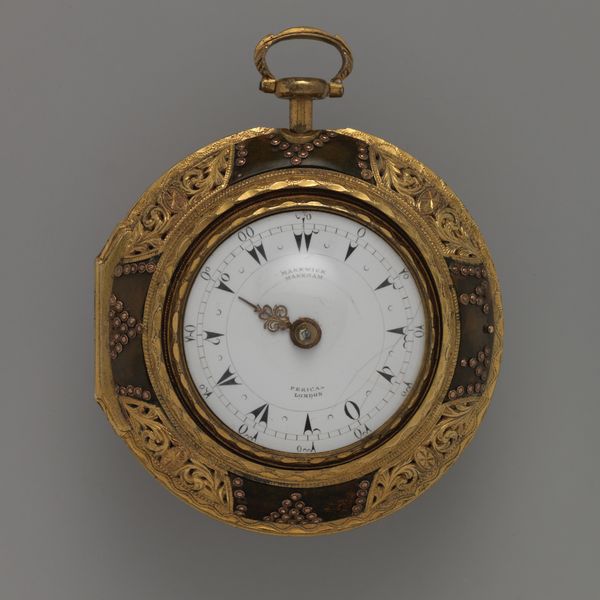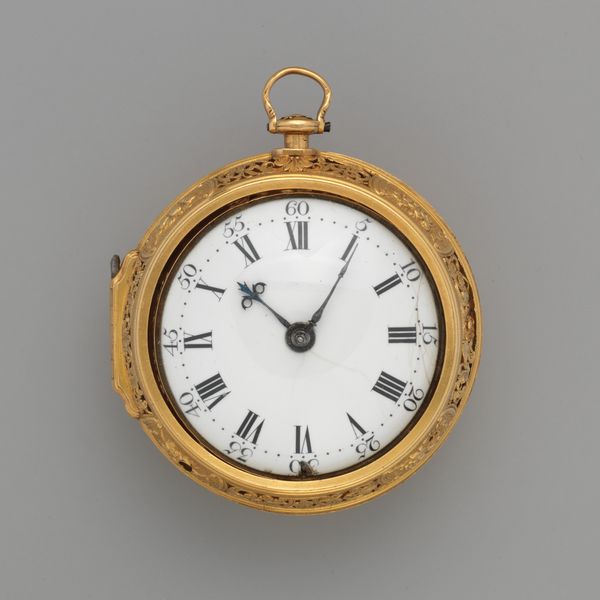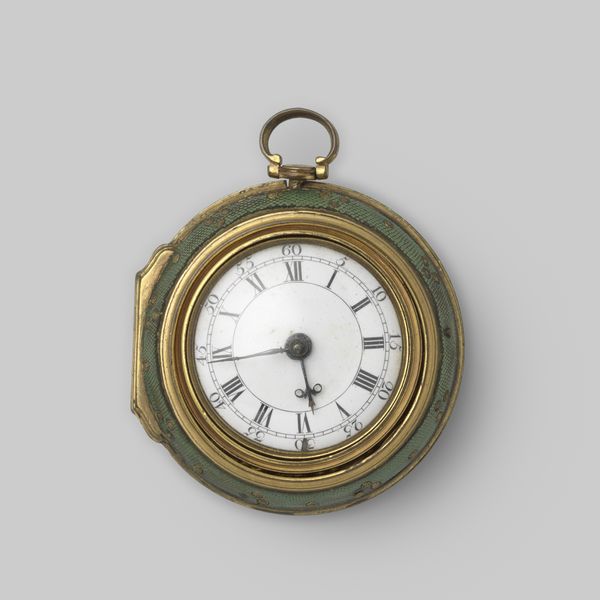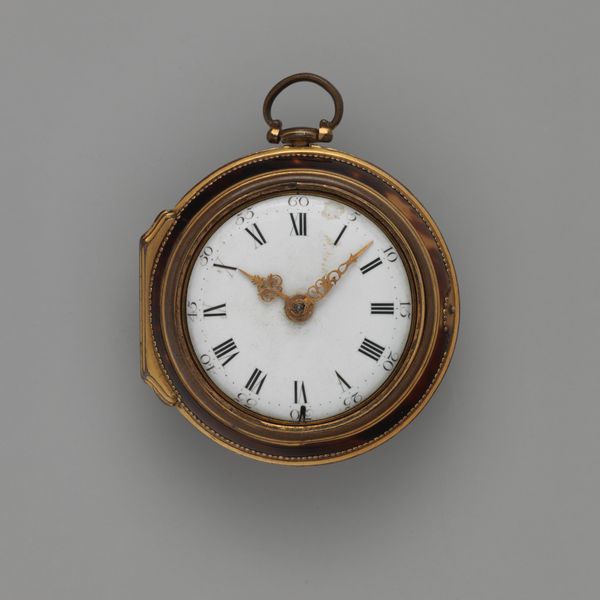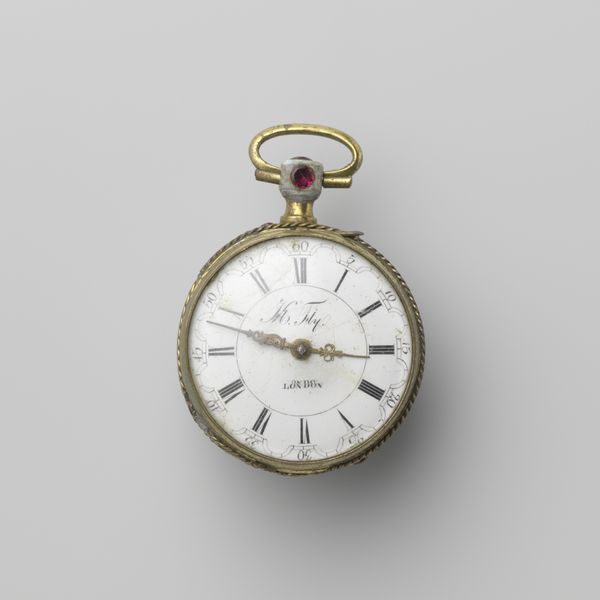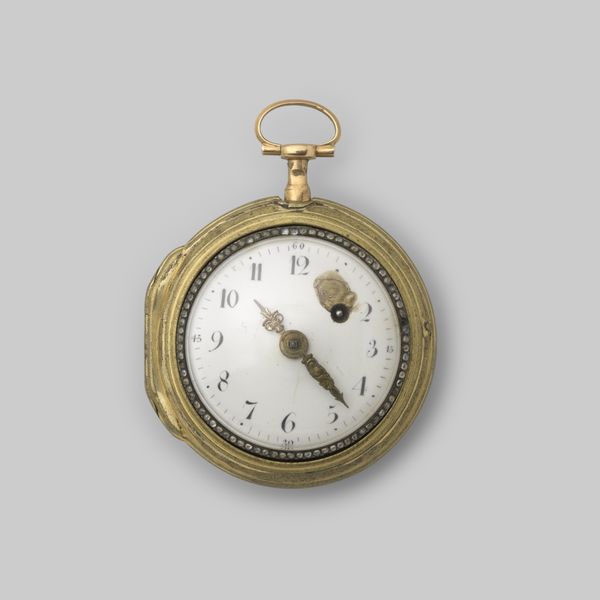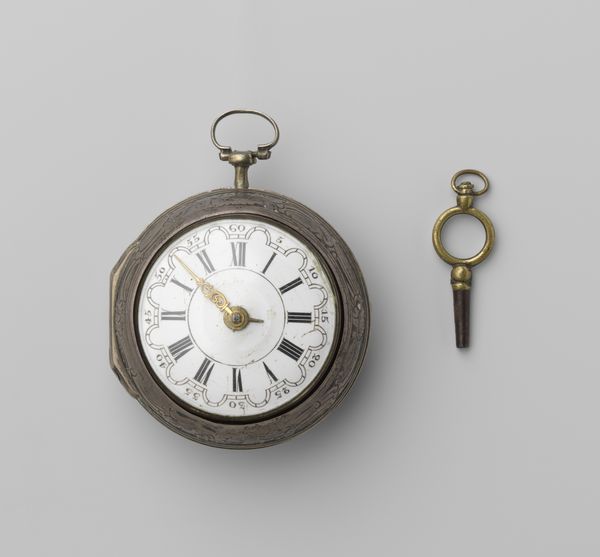
metal, sculpture
#
baroque
#
metal
#
sculpture
#
decorative-art
Dimensions: Diameter: 1 3/8 in. (3.5 cm)
Copyright: Public Domain
Curator: What a stunning piece of craftsmanship. This clock-watch was created by Daniel Delander sometime between 1700 and 1710. It’s currently held at the Metropolitan Museum of Art. The Baroque-style sculpture is primarily made of metal. Editor: It has such an aura of privilege and power about it, doesn't it? Even divorced from its original owner, there's an inescapable weight of social class associated with something like this. Curator: Absolutely. Think about the process of creating something like this during that era. Delander, as the clockmaker, would have overseen or directly executed intricate metalworking techniques. It highlights the artisan's deep understanding of metallurgy and mechanics. What details jump out at you? Editor: The decorative details, first. It feels undeniably baroque, and must have required specialized tools. Who would have commissioned such an elaborate yet practical piece? What power structures are implied? I can imagine this dangling from the waistcoast of some landed gentleman as he oversees enslaved people at work. It is hard to view this item without considering the grim realities of the period. Curator: Your point is valid. We need to acknowledge the uncomfortable truths behind luxury goods of that era, the extractive practices and human labor. Looking closer at the materiality—the weight of the metal, the precision of the gears, the finish—these aspects also reflect contemporary technologies of production. Think about the social life this object inhabited; the shops it was sold in, and the lives of those who labored, probably anonymously, to create this fine instrument. Editor: Precisely! Its small size allowed the owner to keep track of time, and that's another form of control in and of itself. What do we gain by remembering all that context while admiring an antique timepiece? Curator: Context shapes our understanding. By considering the labour behind the piece and its symbolic role, we add nuance to our interpretation, ensuring an inclusive story that resonates even across the centuries. Editor: Absolutely. Thanks for helping me think through those considerations. Curator: My pleasure. Thank you for your insights.
Comments
No comments
Be the first to comment and join the conversation on the ultimate creative platform.
